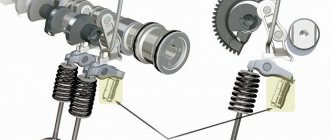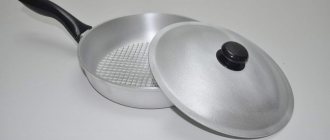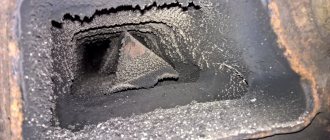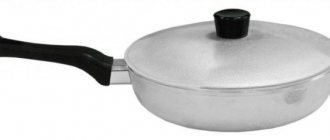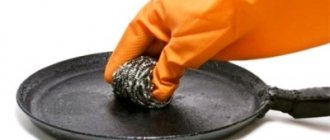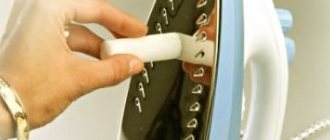Cleaning valves from carbon deposits without disassembling them is a problem that every car enthusiast will inevitably have to face. The formation of carbon deposits is a completely natural phenomenon during the operation of a car, but with the low quality of domestic fuel, it occurs much faster and can become a very unpleasant problem. Many car owners are put off by labor-intensive engine maintenance procedures. Therefore, they often wonder whether it is possible to clean the valves from carbon deposits without disassembling them.
Soot information
The formation of carbon deposits in the combustion chamber of a gasoline engine is a natural process, but it must be controlled. There are many reasons for this process: low-quality engine oil, constant city driving, the formation of condensation in winter and its mixing with oil, violation of oil change instructions, and many others.
In carburetor engines, carbon deposits are deposited on the pistons and piston rings. The intake valves are washed with an air-gasoline mixture and self-cleaning. In engines with direct injection of a combustible mixture, carbon deposits coke on the valves, since they are not washed by the combustible mixture. Symptoms of contamination of the intake channels and valves may occur after 50 thousand kilometers of the car:
- Power drop up to 40%.
- Unstable engine operation.
- Reduced engine response when accelerating.
- Greater fuel consumption.
- Engine detonation problem.
There are many reasons for contamination of the pistons and throttle body, but the most obvious are frequent short trips, driving in traffic jams, and negative driving habits, such as idling the engine for long periods of time. The deposited carbon on the valves leads to their deformation, burnout and loose fit to the seat, thereby reducing the compression ratio in the combustion chamber.
Bottom line
- The method for cleaning a gasoline or diesel engine without disassembling it from carbon deposits is simple: unscrew the spark plugs, pour homemade or purchased chemicals into the cylinder for several hours, turn the pistons without spark plugs, start the internal combustion engine and pour in a five-minute wash. Then change the oil and filter.
- For decarbonization, both traditional mixtures based on acetone, diesel fuel, and solvent, as well as purchased products intended for cleaning the engine oil system are used.
- If the oil system is running, the crankcase and valve cover are first mechanically cleaned, then the engine is assembled and decarbonized, followed by washing the power plant with chemicals.
Cleaning the combustion chamber
There are many ways to clean the combustion chamber. The most time-consuming and expensive method is decoking with the engine head removed. In this case, all parts are cleaned mechanically. However, this process is very labor-intensive and therefore expensive. The cost of such an operation, in addition, increases the need to replace the intake manifold and cylinder head gaskets. Fortunately, recently it is possible to clean the engine much cheaper and faster.
Prevention significantly extends the life of rings and valves. Industrial enterprises produce a cleaning liquid that drivers add to gasoline when refueling. The norm is indicated in the instructions. There are liquid products for removing carbon deposits without disassembling the engine. The process looks like this:
- Warm up the engine.
- Set the pistons to the middle position.
- Turn out the spark plugs.
- Pour in carbon remover.
- Reinstall the spark plugs.
- Leave for a day.
- Remove the spark plugs and blow out the cylinders using the starter.
- Close the spark plugs and start the engine.
- After the procedure, change the oil.
Carbon deposits and coke are the main ways to get rid of them from an engine
There are two main options that can be used to clean the motor, let's look at each of them:
- clean the power unit with any flushing agent;
- disassemble the engine and mechanically remove deposits
As for flushing oils and fuel additives, this cleaning will remove small deposits in the fuel system, lubrication system, combustion chamber and other places only if the contamination is insignificant. Otherwise, in case of heavy contamination, such additives will not wash away the deposits and the cleaning effect will not be achieved. Sometimes you can even make the situation worse and cause harm.
Many motorists are interested in the question of how to flush the engine from carbon deposits without disassembling it? Therefore, we will consider a method in which the unit does not need to be disassembled.
- We unscrew the spark plugs on gasoline cars, or potassium plugs on diesel cars.
- We pour a special “decarbonization” liquid into the cylinders through the spark plug wells.
- We wait several hours - the cleaner softens the deposits.
- We screw in the spark plugs and start the engine. The softened carbon burns out and is removed from the cylinders.
After this procedure, you cannot use the oil and oil filter remaining in the engine; they must be replaced. Getting into the engine crankcase, the washed composition saturates the oil and filter with abrasive particles that are aggressive towards the cylinders.
To achieve the maximum effect of engine cleanliness, it is necessary to use a mechanical cleaning method. Its principle is simple - the motor is disassembled and cleaned of carbon deposits and coke manually using an abrasive tool. Then it is washed with detergents with high surface activity. This method allows you to clean all hard-to-reach engine elements, including lubricant supply channels and other elements.
Advice from experienced drivers
As a result of trial and error, obtained by car enthusiasts when cleaning a car engine, cheap and effective technologies were revealed. Drivers try to flush the combustion chamber with liquid without removing the cylinder head. The composition of the liquid that dissolves dirt was obtained experimentally. Its composition consists of hydrocarbons capable of softening charred oil impurities:
- kerosene;
- turpentine;
- oil.
Take the components in equal quantities, usually 0.5 liters each. Pour the mixture into the cylinders overnight. After washing, change the oil.
other methods
There are other ways to clean carbon deposits from valves.
- increased load on the engine. Perhaps not all car enthusiasts know that the valves on the engine have a self-cleaning property. Carbon deposits are formed not least due to the fact that the car is operated in urban conditions, at low speeds, with low engine speeds and long periods of idling. Therefore, periodically you need to give the engine full load. In this case, the carbon deposits on the valves burn out;
- cleaning with an alcohol-gasoline-oil mixture. The proportion of the mixture components should be 50:45:5. With this mixture, you need to start the engine and let it run for about 2 minutes at high speeds. Nagar must go.
Use of nut shells
Frequent problems with the formation of carbon deposits in the combustion chamber of carburetor engines, especially direct fuel injection systems, have forced automotive specialists to develop technology for removing these deposits in an ergonomic and safe way.
The latest developments by scientists in the field of chemistry make it possible to clean carbon deposits without dismantling parts. European automotive service companies are introducing cleaning technology based on the use of special granules that safely remove deposits from intake ports and valves. A process has also been developed to neutralize the granules, which does not leave residues.
The new technology is developed on the principle of sandblasting, but not with sand, but with a soft abrasive material - walnut shells. The method is non-invasive and completely safe, while being 100% effective. After the operation, the valves are in perfect condition.
To effectively clean the intake channels and valves until they are completely free of deposits using the new technology, you do not need to open the engine head; it is enough to dismantle only the intake manifold. The high efficiency and short time required to complete this procedure is an excellent alternative to traditional methods of removing carbon deposits and disassembling the engine.
The technological process of cleaning with granules does not cause abrasion of the material, so the surface of the cylinder mirror is maintained in good condition. Benefits of carbon blasting:
- Effective removal of contaminants with a flow of granules.
- A special abrasive ensures stable cleaning quality.
- The specific, non-sharp geometry of the granules, as well as their internal structure, makes it possible to remove contaminants with high quality, while maintaining the surface of the parts.
- The neutralizer allows you to effectively remove slag residues after cleaning.
- The nozzles in the set are selected for various channel shapes.
Advantages of engine cleaning without disassembly
Obviously, the main advantage is the absence of the need to disassemble the power unit. Mechanical disassembly is a complex and time-consuming process that requires an impressive amount of work. Carrying it out just for the sake of removing carbon deposits is impractical. This procedure is typical when performing major engine repairs.
It is worth noting that before performing the cleaning procedure, you should seek advice from professional mechanics. A completely cleaned engine is beyond the power of even very strong chemicals, and its incorrect use can cause damage.
Cleaning throttle valves
PRO-LINE throttle valve cleaner is a special product for removing oil deposits and other contaminants from the intake system parts of gasoline engines.
The drug ensures the removal of impurities that cause jamming of the throttle valve and the mechanism for changing the length of the manifold. This allows you to eliminate the main causes of a drop in engine speed at idle and short-term loss of power directly when switching gears. In addition, the product also removes contaminants from the intake valves, which is especially important in engines with direct fuel injection. The procedure for cleaning the intake system and throttle valve with a wash is very simple:
- Remove the air supply hose from the throttle body and, using a long probe, pour the drug into the manifold, as well as directly onto the valve.
- After waiting for 3 minutes, you need to start the engine and set the rpm to 2500 rpm.
- Dispense the product into the manifold and onto the valve. To clean these elements you will need about 200 ml of the drug.
An innovative method of cleaning carbon deposits with hydrogen greatly simplifies the procedure. But it is used in specialized workshops, since a machine is needed to produce hydrogen. This premium device is available in the European market. Designed for engines with a volume of up to 20 thousand cubic centimeters. and forms a thick mixture of hydrogen up to 700 liters per hour.
The device non-contactly removes oil deposits from the engine in 90 minutes without changing the oil. Cleaning is recommended in particular for diesel engines that are used for short distances. The device itself is designed for any type of car. Cleaning procedure:
- open the air filter, connect the hydrogen supply tube to it;
- turn on the gas production machine;
- start the engine and set the appropriate crankshaft speed depending on the car model.
Cleaning through nozzle holes
To clean the valves and at the same time avoid the epic of disassembling the engine, there are many chemical agents. They can be in the form of fuel and oil additives, but practice shows that the use of such agents is ineffective and also has unpleasant side effects. Therefore, chemical cleaning through the nozzle holes is considered the most effective.
Experts recommend combining this cleaning procedure with an oil change. This allows you to fill not only the cylinder head cavity with cleaning foam, but also the entire combustion chamber. Thanks to this, it is cleaned and the piston rings are decarbonized.
Interior cleaner
The most effective way to perform such a procedure as cleaning the piston from carbon deposits is considered to be a universal concentrate intended for washing heavily soiled surfaces of the car interior. Of the products offered on the market, the most effective is the Italian product Atas Vinet. To carry out the procedure, you need to dilute it in a ratio of 1/10 with water. However, even this decarbonizing liquid has difficulty coping with hard carbon deposits. After this, a special product is used to completely remove small residues of carbon deposits. It is "Dimexide". This drug is used quite often to decarbonize rings. True, this solution is even more often used for medical purposes.
Experts recommend finding out in advance how to clean the piston from carbon deposits, and performing these actions for preventive purposes, without waiting for the engine to break down.
Methods for external piston cleaning
The removed parts are ready for further action. Now you can not only inspect them from all sides, but also clean the pistons from carbon deposits by disassembling them using any of the known methods. Folk auto repairmen who repair cars at home suggest using alternative methods instead of traditional means.
In their opinion, the most effective cleaning products are:
They even suggest using the well-known Coca-Cola, claiming that it copes well with even the most severe carbon deposits. However, despite the fact that the drink is famous for its cleansing properties, the effect is minimal.
Therefore, experienced specialists do not advise experimenting with food products. The pharmaceutical drug "Dimexide" has proven itself to be good for decoking rings, but it should be used as a last resort, when the main sludge has been removed.
